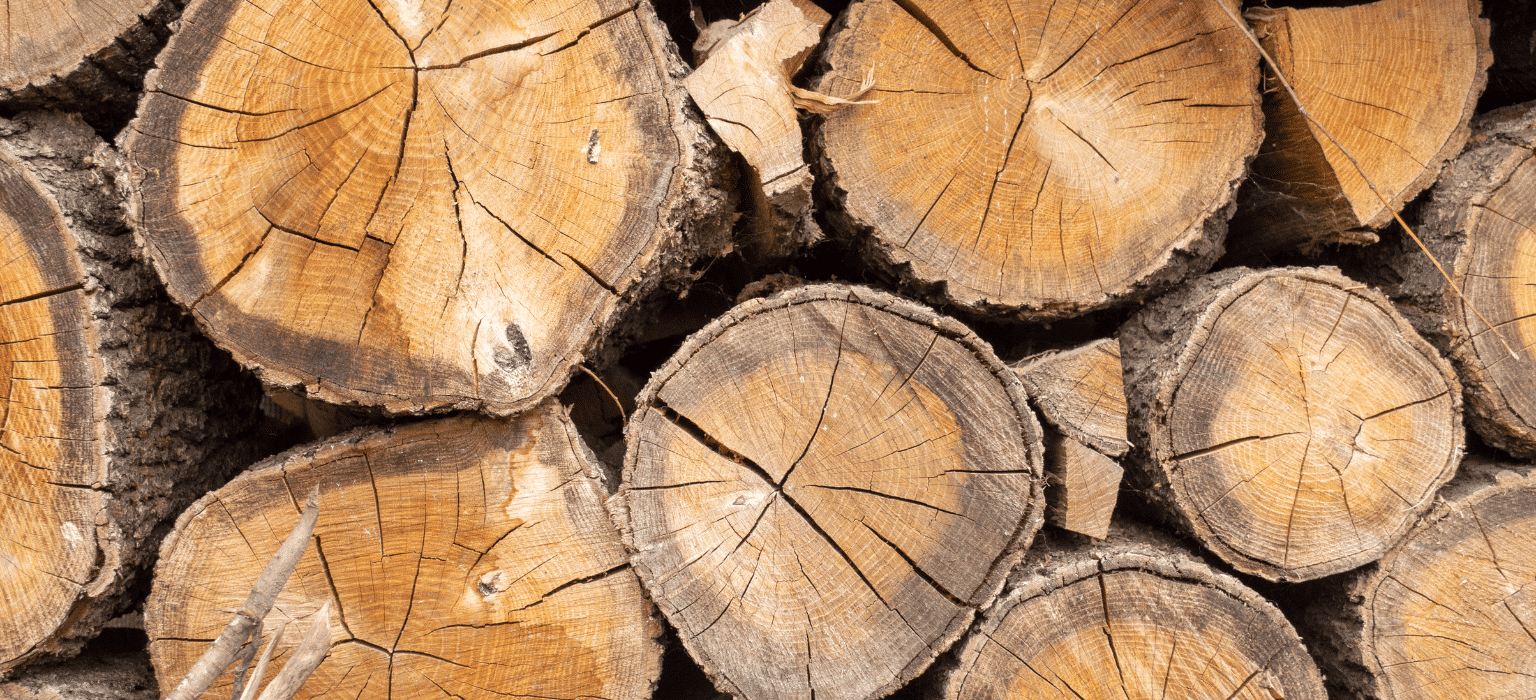
Firewood selection is crucial for a comfortable and inviting wood fireplace experience. Not all firewoods are equal in terms of burning properties, heat production, and smoke emission. The task of choosing the perfect firewood from a myriad of options can be quite daunting. Don’t worry, though, as we have you covered with a quick guide on the best and worst types of firewood.
Dry is Best!
One fundamental aspect to remember about firewood is that regardless of the wood type, proper drying significantly enhances its burning efficiency. Different woods require varying durations to dry thoroughly, and understanding the art of firewood storage is essential.
Ensuring the dryness, or seasoning, of your firewood before using it in your fireplace is of utmost importance. Here’s why:
Enhanced Heat and Reduced Smoke
Dry firewood burns more efficiently, generating increased heat and making your fireplace warmer and cosier.
Less smoke and soot accumulation: Wet firewood tends to produce more smoke and leave behind soot, a flammable substance that accumulates in your chimney, potentially leading to chimney fires if not properly dealt with.
Easier Ignition and Longevity
Dry firewood ignites more easily, producing a brighter flame, which in turn makes lighting your fireplace a breeze.
Moreover, dry firewood burns for longer periods, providing a consistent and sustained heat source. As an added benefit, it’s environmentally friendly too. Burning dry firewood releases fewer pollutants into the air, promoting a healthier environment.
Consequently, it is crucial to store your firewood in a dry and well-ventilated location for at least 6-12 months before utilising it in your fireplace. Trust us, the effort will be well worth it, as there’s something truly enchanting about a traditional fireplace compared to an electric alternative!
Let’s now explore the best types of firewood available:

Optimal Firewood Choices
Certain firewoods are considered superior for use in wood heaters and fireplaces due to their dense grain structure, resin content, and ability to burn hot, long, and cleanly.
Hardwoods such as oak, maple, cherry, ash, and birch top the list as the most suitable firewood types for fireplaces. These hardwoods ignite quickly, produce minimal smoke, and emit a high amount of heat, creating a warm ambiance and ensuring efficient home heating.
Specifically focusing on hardwoods:
Oak, Maple, and Cherry
Oak, maple, and cherry, being hardwoods, are regarded as the finest firewood options. They burn hot, long, and clean. With their dense grain structure and resin-rich composition, they are favourites among homeowners and outdoor enthusiasts alike.

Ash
Ash, a hardwood, is renowned for its rapid combustion and high heat output. Its sap content aids in swift ignition and efficient burning, making it an ideal choice for fireplaces, wood stoves, and outdoor fires.
Birch
Birch, another popular hardwood, offers prolonged burn time and high heat generation. Its light coloration contributes to minimal smoke production, while its pleasant aroma enhances the overall experience of indoor fires.
Now, let’s take a look at some firewood that are less favourable for fireplace use:

Inferior Firewood Choices
Certain firewood types possess characteristics that make them unsuitable for fireplace usage. These include low density, high moisture content, and elevated resin levels. Igniting such wood can be challenging and may result in excessive smoke, creosote, and sparks, posing risks to both the fireplace and chimney.
Softwoods
Pine and cedar, categorised as softwoods, are not recommended for use as firewood. Due to their low density and resin content, these woods are difficult to ignite and tend to produce substantial amounts of creosote, an extremely flammable substance that can accumulate in chimneys and raise the likelihood of chimney fires.
Willow
Willow, also a softwood, is not recommended as firewood due to its low density and high moisture content. Igniting willow can be a struggle, and it often generates excessive smoke.
Eucalyptus
While eucalyptus is commonly used as firewood in many countries, it is not advisable for most parts of the United States. This wood contains a high oil content, making it easy to ignite. However, it burns intensely hot and produces copious amounts of smoke.

Poplar
Poplar, a softwood, is also discouraged for use as firewood. Its low density and moisture content make ignition challenging, leading to significant smoke production.
The Importance of Fireplace Cleaning Between Different Firewood Types
Thoroughly cleaning your fireplace between the use of different firewood types is vital to ensure a safe and efficient fire. Each firewood type possesses a unique chemical composition and burning behaviour. Burning multiple wood types in one fire can result in creosote and soot buildup within your chimney.
This build-up increases the risk of chimney fires and makes starting and maintaining fires more arduous. Regularly cleaning your fireplace between different firewood types removes residual soot and creosote, reducing the risk of chimney fires.
Cleaning can be accomplished by employing a chimney brush or vacuum to eliminate soot and creosote build-up from the chimney and firebox. Maintaining cleanliness in your chimney and fireplace is key to a secure and effective fire.
Ignite Your Fire!
The choice of firewood significantly impacts the warmth, efficiency, and duration of your fire. To ensure a safe and efficient experience, it is imperative to select the appropriate firewood type and store it correctly to prevent moisture build-up and decay.
If you don’t have a fireplace yet, you’ve come to the right place. Contact us on 0423 399 561 now to discuss your space and its heating needs, and let us bring the warmth and charm of a fireplace into your Sydney home!

